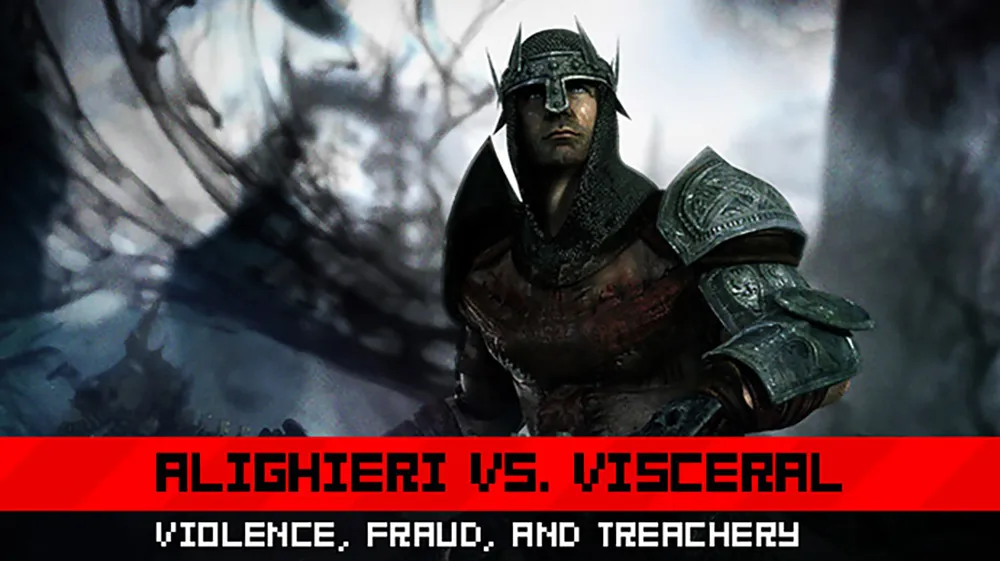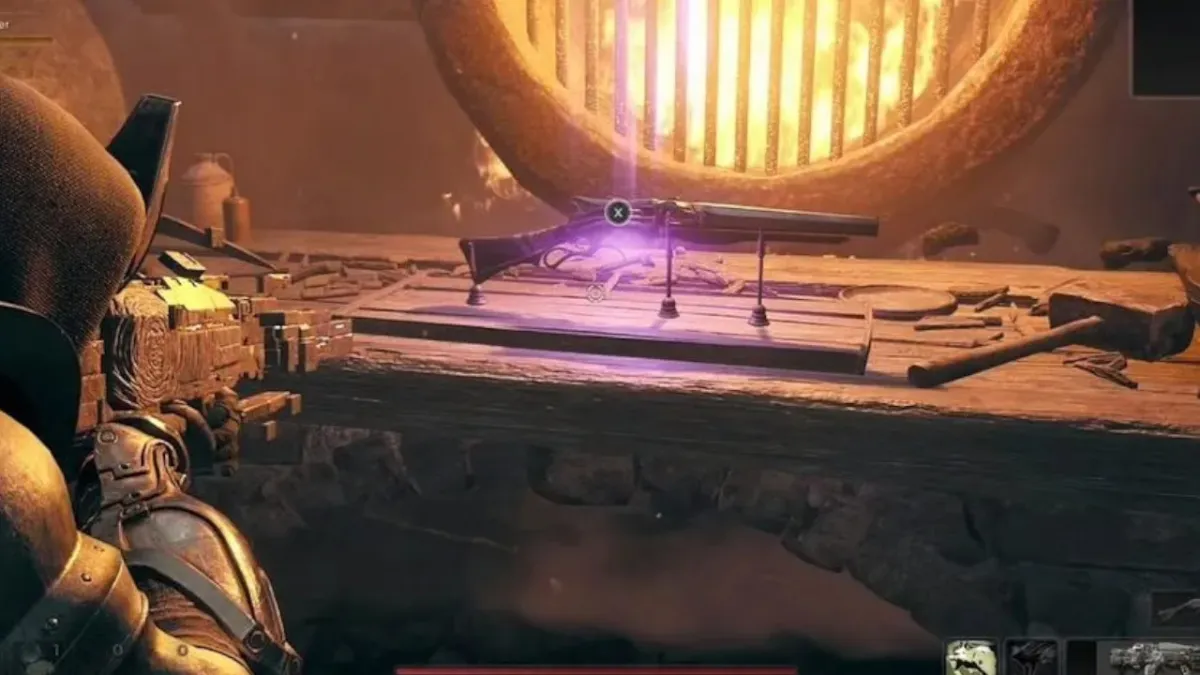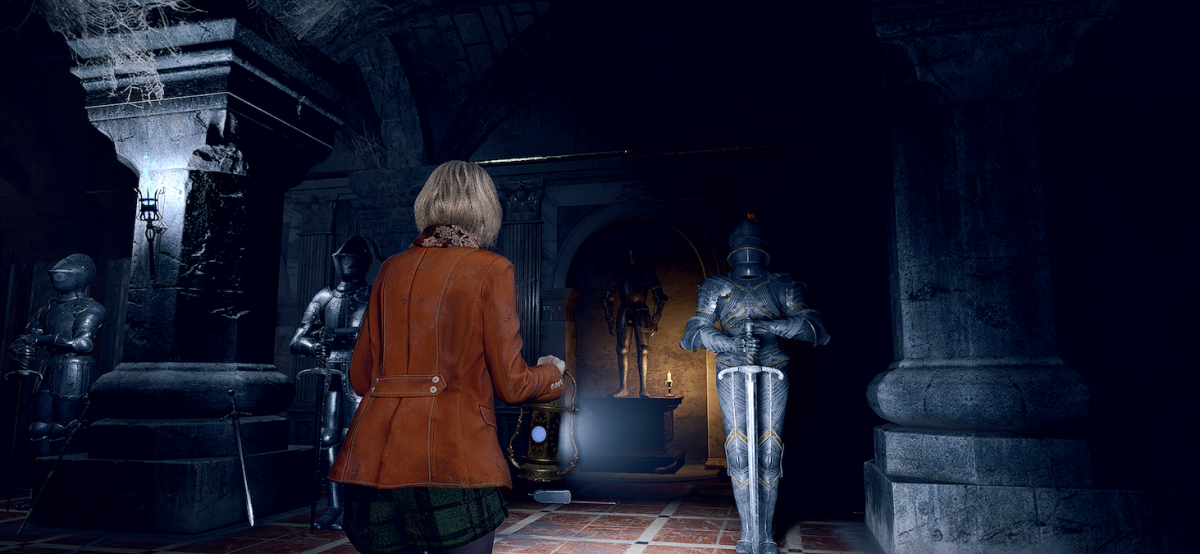As we — Conrad Zimmerman, Benjamin PerLee, and myself — round out the third and final installment of our “Playing the Poem” series, I’m sure that both of our devoted readers are preparing Festscrifts, or at least small parades, celebrating our academic rigor and intellectual achievements. “A triumph!” one will proclaim; “A tour de force!” shouts the other.
I don’t know that I’d use the term tour de force, though — tour de shoving the business end of a scythe into people’s mouths for ten hours might, technically, be more accurate.
In part one we explored the Rounds of Limbo, Lust, and Gluttony; in part two Greed, Wrath, and Heresy. So, on a more sedated note — because I don’t have the brainpower to churn out any more prose bombastic enough to really encapsulate how redonk Dante’s Inferno can be — I present to you Violence, Fraud, and Treachery.

Joseph Leray on Violence
Don’t tell Ben or Conrad, but I pulled the wool over their eyes on this one: Violence is hands down the best level in this section and, if you were to ask me, the strongest level in the entire game. Any way you cut it, Violence is consistently fun, invokes Dante’s original vision of hell brilliantly, and — get this — even reflects back on the Commedia in a way that changes and enhances the original’s meaning in some interesting ways. I was rather critical of Dante’s Inferno before it was released, and while my issues with the game remain unresolved, Violence proves to me that Visceral almost nailed something akin to a successful poem-to-game adaptation.
At the end of the sixth Circle, Heresy, Virgil explains that, because Violence can be done against other people, one’s self, and God and nature, the seventh Circle is divided into three parts — the boiling River Phlegethon, the Wood of Suicides, and a desert area where blasphemers are punished (which doesn’t have a convenient nickname). I won’t spend much time talking about the Phlegethon because, unlike in the poem — which has Centaurs kicking the hell out of the damned — it’s a short and rather unremarkable prelude to the real treat.

Priamo della Quercia, Wood of the suicides and spendthrifts (1444-1452)
Here’s how Dante describes the Wood of Suicides: “No green leaves, but rather black in color,/ no smooth branches, but twisted and entangled,/ no fruit, but thorns of poison bloomed instead.” Visceral really nailed the visuals here, and they took steps to make sure the game and poem matched up as best as possible. For example, Dante mentions often that there are no paths through the Wood, and even though the level is technically linear, there are enough loops and branching paths to re-create a claustrophobic sense of being lost.
Of particular interest, though, is the way that Visceral communicates this notion that the very environment — i.e. the one I’m moving through as Dante the player-character — is made up of actual souls. Visceral almost touches on this with the “Climb of the Damned” sections scattered throughout the game, but that doesn’t approach how brilliant the Wood of Suicides truly is.
At one point in the level, Dante finds himself trapped in a circular clearing surrounded by Pests, small flying enemies that shoot fireballs. Dante’s Inferno teaches players pretty early that the easiest way to deal with Pests is to use the projectile crucifix attack; if you read Visceral Games combat designer Vincent Napoli’s guest blog, you’ll know that the cross attack is “basically a spread shot,” which causes many of the projectiles to hit the walls instead of enemies. As Dante fights the Pests, players hear the most god-awful wailing; if you’re clever (cleverer than me — I didn’t notice this until my second playthrough), you’ll realize that the level itself screams at you if you attack it.
This is one of the few organic moments in Dante’s Inferno, but it drives the thematic implications of the Seventh Circle remarkably well — the Wood itself is made up of those “violent souls,” dropped “into the wood, not in a place allotted,/ but anywhere that fortune tosses it./ There, like a grain of spelt, it germinates.” Virgil makes it clear to Dante that “pain is an outlet” for those condemned to the Wood; Visceral teaches players the same thing by creating a world with a consistent internal logic and using smart level design — the circular room full of Pests — to guide players into stumbling onto the discovery that the Wood’s architecture responds to player input in a thematically consistent way.

Sandro Botticelli, Violent against nature: sodomites (c.1480-c.1495)
The next section of Violence is a sprawling desert in which the blasphemers, sodomites, and usurers are punished for their crimes against God. I always imagined that Dante and Virgil stroll along on a boardwalk, but Visceral re-imagines the level as a series of decrepit castles and fortresses. To understand why I find this design choice fascinating, we’ll have to do some literary backtracking.
Throughout the Inferno, Dante is focused on the spiritual and social climate of Florence, and, more specifically, on finding a way to institute a republic that lives up to his spiritual ideals. As Ben explained in his talk on the Round of Heresy, Dante often merges politics and theology. So, you see why Visceral’s decision to create the last section of the Seventh Circle as a series of ruined fortresses is thematically coherent: Visceral suggests, through their visual design, that committing acts of violence against God undermines the social and political foundation, represented here by the ruined castles — architectural symbols of political power and stability. It’s particularly interesting to realize that this notion is well supported throughout the Commedia, even if it’s not explicitly stated in this section of the Inferno.
And so, Visceral Games achieved something I never thought they’d be capable of: they refined my understanding of the Divine Comedy through play. Exploring a different world on my own terms is something unique to videogaming, and Visceral managed to use that ludic component to reflect backward onto the original Inferno in a way that feels organic and right.

Gustave Doré, Dante and Virgil with Brunetto Latini (1890)
It’s important to realize the different ways that Visceral used smart level and visual design — components unique to games — to communicate certain thematic messages toward players: the Wood of Suicide reinforces Dante’s own vision while the Visceral’s desert refines our understanding of Dante’s theology. And that’s really impressive.
Dante’s Inferno is at its best when it comes to creating an interesting world in which players can explore the game’s mechanics and its relationship to the original Commedia, and I think something similar can be said for videogames in general. While I think the Circle of Violence is, hands down, the best level in the game — both because it’s a lot of fun and because it uses it’s level design effectively — it also, unfortunately, highlights how generic and un-inspired most other parts of Dante’s Inferno are. This might be the only place where play and theme come together so seamlessly. Visceral touched on some great uses for atmosphere and visual design, and it’s a shame they didn’t apply it to the rest of the game.

Conrad Zimmerman on Fraud
The eighth circle of the poetic Inferno is absolutely huge. Running thirteen Cantos, nearly seventeen hundred lines, it’s nearly half of the entire work. So, the expectations for Visceral creating an accurate depiction of this immense region have to be low out of necessity. But I’m getting ahead of myself.
Fraud is really a hell unto itself. A region called the Malebolge, it’s a funnel-shaped series of Bolgias (rings) each devoted to a specific type of dishonesty coupled with a unique punishment for its damned. Being steeped in human excrement, having their heads twisted around the wrong direction, the wretched souls who find themselves here for eternity get some of the most varied and uncomfortable-sounding tortures in the whole of the poem.
The biggest problem, then, is one of scale. To try and be really faithful to the Malebolge would require an entirely separate game and that would be wholly unrealistic to demand. This particular area of Hell just isn’t suitable for a literal representation from a practical standpoint.

Priama della Quercia, Punishment of the Diviners (1444-1452)
That doesn’t, however, mean that the developer should get a complete pass on Fraud. The tragedy of this stage is that while Alighieri’s Malebolge is one of the most varied and inventive sections of the poem, Visceral’s interpretation is tedious and forgettable. It’s the most simplistic, drab and disappointing section of the game.
The reasons for this are simple: The game’s Fraud is nothing but a series of arena challenges with objectives and rules which vary from ring to ring. The Bolgias are all indiscernible from one another save for statues depicting the specific torture of each level and some minor variations on entering and exiting the identical, circular platforms where each challenge takes place.
It smacks of the team running out of ideas and resorting to an old standby, which is sad. For my money, the best part of each Bolgia is the voice-over provided by Beatrice describing the nature of each ring and making jabs at Dante’s dishonest nature. I can’t help but feel that the whole of Fraud would have been better served as a beautifully rendered cutscene that briskly sweeps through the ten rings and their relevance to Dante’s predicament than the creatively vacuous stage that we were given.

Ben PerLee on Treachery
It is here that we finally enter the last and final circle of hell: Treachery. A circle for those condemned for the greatest of sin, Treachery (or Betrayal, as some call it), those who enter here are basically liars, those who turn their backs on the ones who love and trust them the most.
In the poem, Alighieri describes Treachery as a four rounds, with each round the final resting place for a specific type of sinner. Surrounding these Rounds are giants, huge men like the Biblical hunter Nimrod. Within are the Rounds, starting with the frozen familial traitors of Caïna, the political traitors of Antenora, the traitors of guests in Ptolomaea, and the lordly traitors of Juddeca, the resting place for those who are traitors to their leaders and God. All named after Biblical or historical figures in treachery, the final is the resting place of Judas Iscariot, the betrayer of Jesus.
Finally, there is the moment we have been waiting to see through the entire poem, the first glimpse of Satan. In the poem, Satan is almost a tragic figure, a constantly sobbing monster half frozen in ice from the freezing wind his wings blow. He is also a three-faced demon, with each head munching away on some major traitor. Brutus and Cassius (traitors to Caesar) are chewed on by the left and right head, and Judas Iscariot spends eternity having his head gnawed and his back slashed. It’s pretty graphic and awesome, actually.

Gustave Doré, The Giants (1890)
Disappointingly, Treachery is fairly short and simple in the videogame version. As icy as you would suspect, Visceral has done a great job in replicating this final area in what could be just an “ice world” and has made it creepy. The levels are dark and icy, and there is a strong sense of isolation. The actual Circle of Treachery looks great. Unfortunately, the Rounds from the poem do not show, rather this Circle of Hell is for all traitors, not victims of subdivision. The giants sort of make an appearance, blowing wind to knock Dante off platforms, but that is all they are. Dante just kinda breezes past everything to get to the one part culminating in the end of the game: the battle with Satan.
One major bummer I discovered during a presentation on Dante’s inferno at GDC. Ash Huang, Art Director of Dante’s Inferno, showed off some of the early art for these giants. One of them was a version of Nimrod (a great hunter associated with the Tower of Babel) where he was literally a walking building of fire. Many of the neatest themes could not make it, such as the addition of Judas to the plot, and the fact that Satan, in the boss fight, is reduced to a well-endowed demon is somewhat disappointing. I honestly feel that a three headed version of Lucifer could have been pretty cool, especially in a boss fight.
Thankfully, Huang was more than ready to discuss the reasons why Lucifer wasn’t the three-faced demon of the poem. “For us, Lucifer was imagined in 3 forms in the game (again playing with the subtext of the trinity of Satan and the number 3). At the outset, we present the player with a shadowy mysterious and ephemeral version which is Lucifer as he projects himself into the world.” Huang describes the vision of Satan as a three-faceted figure instead of a three-faced figure as a representation of this trinity.
After all, three is important to the game, with the love-triangle between Dante, Beatrice and Satan. Huang continues, “The second form of Lucifer takes the more literal three-headed beast and we see this as the oversized boss that is frozen in Lake Cocytus. This was the version that was most faithful to the imagining of Dante as illustrated by Dore. Here we had a monstrous version with the three heads – each chewing on an infamous traitor (Cassius, Brutus, and Judas). When Dante lands on the frozen ice of Treachery, it is this version that he must overcome in round 01 of the Boss battle”.

Gustave Doré, Lucifer; King of Hell (1890)
Finally, Huang wanted to make clear the reason why Satan ends the game as a more traditionally “Satan figure”, with a smaller size and almost saytresque look. “the third and final apparition of Lucifer again returns to a more ‘mano-a-mano’ scale. Again, to establish a closer antagonistic relationship between Dante especially during the final FMV sequences where Lucifer tries to entice Dante into a partnership of sorts. We end the story on these final moments in that exchange between Dante and Lucifer.”
Arguably, what we receive in the game is not necessarily bad, but for this reader, I think there could have been some really cool imagery and gameplay elements that were ignored. Instead, the circle of Treachery is reduced to a whole lot of what-could-have-been, which is a bummer considering how well the game honestly portrayed the poem. I personally am not disappointed, but I think the game was successful all the way through, and ends a little weak.
In the end though, I want to give Huang a chance to defend the game. One of the biggest complaints against Date’s inferno was how it could never measure up to the poem. Huang says, “It’s interesting and to me not all that surprising that some people would find the use of the poem controversial. On the one side, it has been unfortunate that this has distracted from what I think has been a game that really is fun to play once you judge it specifically on those terms. On the other hand, the interest the discussion has raised has elevated an awareness of the work and re-inserted it again into the consciousness of our contemporary culture.”
Huang brings up that the game has brought the poem to the forefront of culture, and we can be sure plenty of people have opened the Divine Comedy as a result of this game. I think he sums up the transition from the poem to game nicely, a good point to end this series. He says “For us, translating the poem as a direct facsimile wouldn’t have worked for the objective that we were shooting for – ie. an action/adventure game…My hope is that when a player first sees characters like Cerberus or Minos…or sees Dis and Violence for the first time, they will be presented with images that are memorable and impactful. If we can get there, then we’ve done a good job not only with respect to the visuals, but also in our ability to understand and re-imagine what begins as the source – the original poem.”




